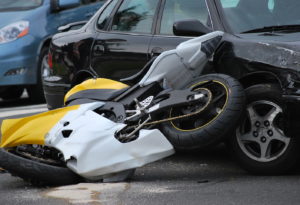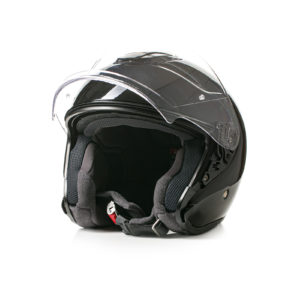 Recently, in the late morning hours, Philadelphia police investigated a fatal crash that involved a motorcycle in the city’s Cobbs Creek section. The crash occurred when an SUV was attempting to turn onto Webster Street, and a motorcycle crashed into the back of it. The force of the collision threw the 29-year-old motorcyclist from his bike, and he died at the scene due to significant injuries to his head and body.
Recently, in the late morning hours, Philadelphia police investigated a fatal crash that involved a motorcycle in the city’s Cobbs Creek section. The crash occurred when an SUV was attempting to turn onto Webster Street, and a motorcycle crashed into the back of it. The force of the collision threw the 29-year-old motorcyclist from his bike, and he died at the scene due to significant injuries to his head and body.
While tragic, the accident and the injuries suffered in this accident are not at all uncommon. According to the Pennsylvania Department of Transportation, in 2017, almost 3,200 motorcycle crashes took place across the state, with 185 of them involving fatal injuries to the motorcycle riders. Of those deaths, 93 percent were the motorcyclists themselves, while the other 7 percent were passengers on the motorcycle.
During that same year, the National Highway Traffic Safety Administration (NHTSA) reported 5,172 motorcyclist fatalities nationwide, along with 89,000 individuals who were injured while motorcycle riding. If you’ve been injured in a motorcycle accident, or have lost a loved one to such an accident, you should contact an experienced motorcycle accident lawyer to determine your eligibility to seek compensation for your injuries.
What Makes Motorcycles Dangerous?
The NHTSA noted that, according to 2017 statistics, motorcyclists are 27 times more likely to die when involved in an accident than occupants of passenger vehicles. Why is this the case? The reasons might be the cause:
- Less stability than a four-wheeled vehicle
- Lack of protective features found in cars, such as a steel frame, seat belts, or airbags
- Lack of visibility to other motorists
- Use of a different skill set than what is required to drive a car
- Lack of proper training
The Causes of Motorcycle Accidents
Motorcycle accidents are caused in a variety of ways, often due to the actions of either the rider or another motorist. Here are some of the most common reasons why motorcycle accidents happen:
Speeding
In 2016, 33 percent of all motorcyclists involved in fatal crashes were speeding at the time of the crash. This is a high amount when compared to the 19 percent of speeding drivers involved in fatal accidents with passenger cars, 15 percent in fatal accidents involving light trucks, and 7 percent for large-truck drivers.
Cars Making Left Turns
Around 42 percent of all accidents involving a motorcycle and a car occur when the car is making a left-hand turn, making this the most dangerous riding scenario of all. Generally, the turning car strikes the motorcycle when it is going straight, passing the car, or attempting to overtake the car.
Alcohol Impairment
37 percent of the motorcyclists killed in crashes in 2016 were impaired by alcohol at the time of the accident, the NHTSA reported. Motorcyclists involved in crashes at night were three times more likely to be alcohol-impaired at the time of the crash than those involved in daytime accidents.
Lane Splitting
Lane splitting involves a motorcycle driving between two lanes of traffic that is moving slowly or is stopped. This is a common cause of motorcycle accidents due to the motorcycle’s proximity to cars, the reduced maneuverability of the motorcycle due to the small space between the cars, and the reality that many motorists are not expecting a motorcyclist to be riding in between traffic lanes. Currently, lane splitting is illegal in Pennsylvania, but many riders still do it.
Distracted Driving
Distracted drivers pose a major risk to motorcyclists, who are already less visible to other motorists due to the small size of their vehicles.
Lack of Training
The NHTSA reported that nearly one-third of the motorcyclists killed in accidents in 2017 did not have the proper license to operate the motorcycle. To obtain a motorcycle license, riders must prove their skills with written and on-cycle tests. No license means that these skills have not been tested or proven. Many motorcyclists—particularly the younger ones—are turning to the sport and supersport models, which are racing bikes that have been modified for highway use. With more horsepower than a traditional motorcycle, sport and supersport models also feature a higher rate of accidents, injuries, and deaths due to the higher level of skills needed to safely operate them.
What Kinds of Injuries Are Involved in Motorcycle Accidents?
Head and Neck Injuries

In Pennsylvania in 2017, more than 37 percent of individuals involved in motorcycle accidents were not wearing a helmet at the time of the crash. Head and neck injuries, while not the most common injury in motorcycle accidents, are the deadliest. A traumatic brain injury is the result of a sudden jolt or blow to the head. Motor vehicle accidents are among the most common causes of this type of injury, which can result in mild effects or severe and permanent damage. Some of the types of brain injuries include:
- Concussion: May cause a brief loss of consciousness, but usually does not lead to permanent injury.
- Contusion: A bruise in a specific area of the brain that is caused by impact to the head.
- Diffuse axonal injury: A shearing or stretching of nerve cells in the brain caused by the brain moving quickly back and forth within the skull.
- Traumatic subarachnoid hemorrhage: Bleeding into the space that surrounds the brain, causing widespread effects.
- Hematoma: A blood clot that forms within the brain when a blood vessel ruptures due to injury.
In addition to traumatic brain injury, which can result in death or the need for lifelong care, a study discovered that a high number of motorcyclists killed in collisions had serious soft tissue injuries in the neck, including hemorrhages in the carotid sheath or surrounding the vertebral arteries, phrenic nerve, or brachial plexus. Other common neck injuries include damage to the spinal disks as well as damage to the spinal cord itself.
Helmets have been found to reduce a motorcyclist’s risk of death by 37 percent and risk of serious injury by 69 percent. In 2016, it is estimated that helmets saved 1,859 lives.
Leg and Foot Injuries
Lower leg and foot injuries, including broken bones, are the most common injuries suffered in motorcycle accidents and are suffered by nearly half of all motorcyclists injured in accidents, according to the NHTSA. 28 percent of these injuries involved the lower leg, while another 15 percent involved the knee. The fibula (bone in the lower leg) was the most common bone fractured in motorcycle accidents.
Arm Injuries
One common arm injury suffered in a motorcycle accident is biker’s arm. This term refers to nerve damage in the arm or hand that is caused by the motorcycle landing on the limb during the accident. This condition may result in partial or complete paralysis of the arm or hand. Symptoms include weakness, numbness, and pain.
Riders, when falling, instinctively attempt to catch themselves with their arms or hands. Other arm and hand injuries that riders often suffer in motorcycle accidents include broken bones, damage to the shoulder or elbow joints, or even crush injuries or amputation.
Road Rash and Disfigurement
Although it is often regarded as “minor” as far as motorcycle injuries are concerned, the complications of road rash are often significant. Road rash is the term used to define a condition where the outer layers of skin are scraped off in an accident due to contact with the roadway. Severe road rash may lead to scarring or disfigurement and may require skin grafting to repair. Additionally, road rash occurring on joints such as the elbows or knees may cause stiffness due to healed skin that is tighter than it was before the injury.
Internal Injuries

The vast majority of motorcycle riders are ejected from their motorcycles in an accident. They may then come in contact with other objects, including vehicles, concrete barriers, utility poles, or the road itself. The risk of internal injuries is high, and such injuries may include:
- A punctured lung or bleeding around the lungs due to broken ribs
- Bleeding in the main artery in the leg due to a thigh fracture
- Damage to the organs, including the spleen, kidney, heart, and lungs
Speak With a Motorcycle Accident Lawyer
Injured in a motorcycle accident? Let a motorcycle accident lawyer at the Levin Firm help you understand how the legal process of obtaining compensation works.
